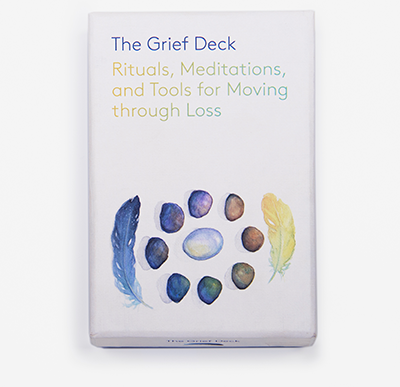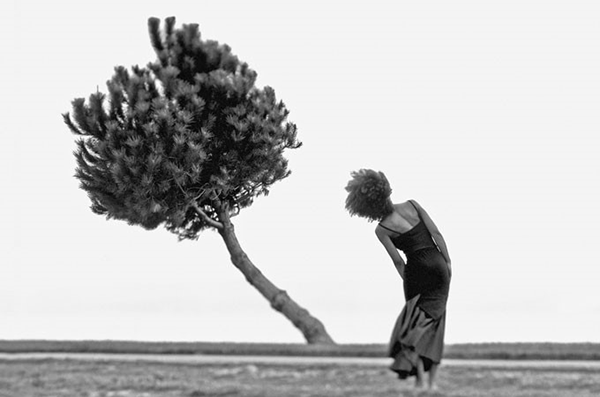| TOOLBOX TIPS |
 |
An idea to help people grieve when they live far from the deceased and may not be able to attend a memorial is to set up an altar or a dedicated area for grief within their own home. This way they can grieve in ways that feel safe and comforting. Additionally, I’ve used Flying Wish Paper with folks as a way to release and lift messages to loved ones. This tissue paper is used to write memories or wishes on and is then burnt. Because it is lightweight, it flies while burning.
—Valerie Torrey
|
 |
|
| SHARING SOURCES |
| The Grief Deck |
| Artist and death doula Adriene Jenik, in partnership with the Artists’ Literacies Institute, cocreated The Grief Deck with a diverse group of artists and grief workers. As a response to COVID-19, artists responded to an open call for submissions, resulting in powerful and visually distinct art for each card. A Kickstarter was created to develop this tool and upon funding was distributed to grief workers and community organizations for use. |
 |
| The 60-card deck has original artwork on the front of the cards, while the other side offers prompts and activities to address grief in daily life. The cards can be used one-on-one or within a group setting to open conversations on grief. |
|
|
 |
|
ASK INELDA
|
 |
|
Can you speak to finding the line with your own emotions when doing end-of-life doula work? How do I balance my empathetic side with “being the container” for my client?
—2022 training participant
|
| Educator Shelby Kirillin: You are able to feel emotion, you are able to cry, as long as you’re not crying harder than the people in the room. They shouldn’t have to comfort us, but it’s OK to show emotion. What I find is that when I am serving, if I try to keep my emotions at bay, try to keep quiet from crying, try to keep from feeling, I use a counter energy to do that and am not able to be present. So, what I have found helpful is that when I feel those feelings and when I feel that sadness touching me, I acknowledge it and become present with it. I most often find it washes through me, but if I hold it at bay, it grows and gets bigger and casts a bigger shadow. It’s tuning in with myself, knowing that this is an emotional trigger, and then coming back to the person I am working with. Later I will follow up with doing the self-care of journaling about it and talking it through with a colleague or doula. I keep those healthy boundaries where it’s permeable enough to have an emotional connection, but not where I lose myself. READ MORE |
| Please submit questions to [email protected] |
|
 |
|
| SELF-CARE PRESCRIPTION |
|
|
Hormesis: Fight Stress With Stress
|
Have you ever dragged yourself to a workout you were avoiding and labored through the rigor of the exercises to find a burst of feel-good energy afterward? Or even walked in the freezing cold just long enough to feel invigorated? This phenomenon has a name; it is called hormesis. Hormesis originates from the same Greek root as the word hormone and translates to “to set in motion, impel, urge on.” When we meet a novel or challenging stimulus, whether it is one we’ve chosen or one that’s a result of the external environment, our nervous system responds. With hormesis, that response is a small dose of the challenge itself. In small doses, something that is inherently more than we can sustain or handle becomes a way to build our resilience to stress for the long term.
If we want to build muscle in our bodies, we must take our muscles past what they can do, to the point that micro tears occur. The body then lays temporary connective tissue to bridge the gap between the tears in the muscle fibers. If the short bursts of stress are repeated, a message is communicated to the body that more muscle is needed. What do you think the body does? It makes more muscle, and those temporary connective tissue bridges are made into muscle fibers. Strength is built. Through the physical exercise demands, we set the possibility of power in motion.
Now let’s take this one step further—where do you need more strength, more resilience? Hormesis invites us to repeatedly use what we need in small doses to urge on our nervous system and build deep resources within ourselves. Self-care can show up as doing what we might not like or prefer, but what we may need most—little by little, again and again.
—Omni Kitts Ferrara
|
|

